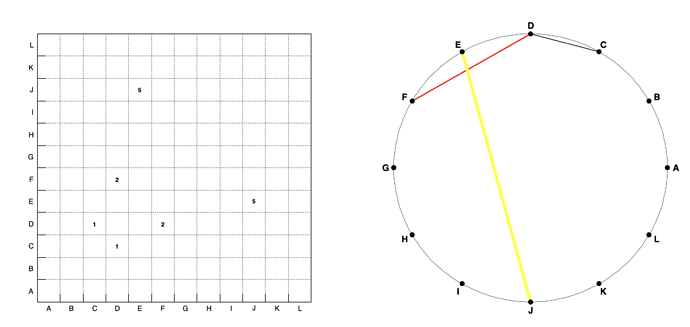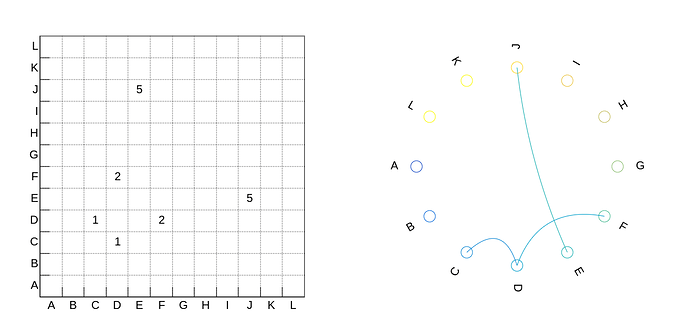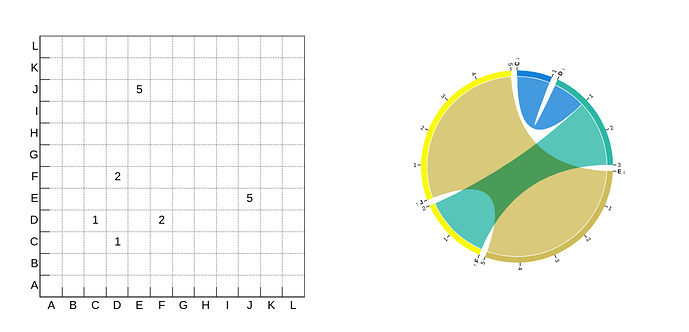Here is a “quick and dirty” macro producing a circular graph. It is really just the basic structure … nothing you can use … just the idea:
TCanvas *c1;
void chord(TH2F *h)
{
c1->cd(2)->Range(-1, -1, 1, 1);;
TEllipse *circle = new TEllipse(0., 0., 0.8);
circle->SetLineWidth(1);
circle->Draw("L");
TAxis *xaxis;
xaxis=h->GetXaxis();
THashList *labels = xaxis->GetLabels();
int ndiv = xaxis->GetLast()-xaxis->GetFirst()+1;
float da = 2*TMath::Pi()/ndiv;
float ax = 0 ;
float ay = 0;
for (int i=1; i<=ndiv; i++) {
for (int j=1; j<=ndiv; j++) {
if (h->GetBinContent(i,j)>0){
auto l = new TLine(0.8*TMath::Cos(ax), 0.8*TMath::Sin(ax),
0.8*TMath::Cos(ay), 0.8*TMath::Sin(ay));
l->SetLineWidth(h->GetBinContent(i,j));
l->SetLineColor(h->GetBinContent(i,j));
l->Draw();
}
ay = ay+da;
}
ay = 0;
ax = ax+da;
}
TIter next(labels);
auto t= new TText();
t->SetTextAlign(22);
t->SetTextSize(0.03);
auto m = new TMarker();
m->SetMarkerStyle(20);
float a = 0;
while (TObject *obj = next()) {
t->DrawText(0.85*TMath::Cos(a), 0.85*TMath::Sin(a), obj->GetName());
m->DrawMarker(0.8*TMath::Cos(a), 0.8*TMath::Sin(a));
a = a+da;
}
}
void chord_diagrams()
{
const Int_t n = 12;
const char *L[n] = {"A","B","C","D","E","F","G","H","I","J","K","L"};
c1 = new TCanvas("c","c",10,10,1200,600);
c1->Divide(2,1);
auto *h = new TH2F("h","",n,0,1,n,0,1);
h->SetStats(0);
for (int i=0;i<n;i++) h->Fill(L[i],L[i],0);
h->Fill(L[2],L[3],1);
h->Fill(L[3],L[2],1);
h->Fill(L[5],L[3],2);
h->Fill(L[3],L[5],2);
h->Fill(L[9],L[4],5);
h->Fill(L[4],L[9],5);
c1->cd(1)->SetGrid();
h->Draw("text");
chord(h);
}


